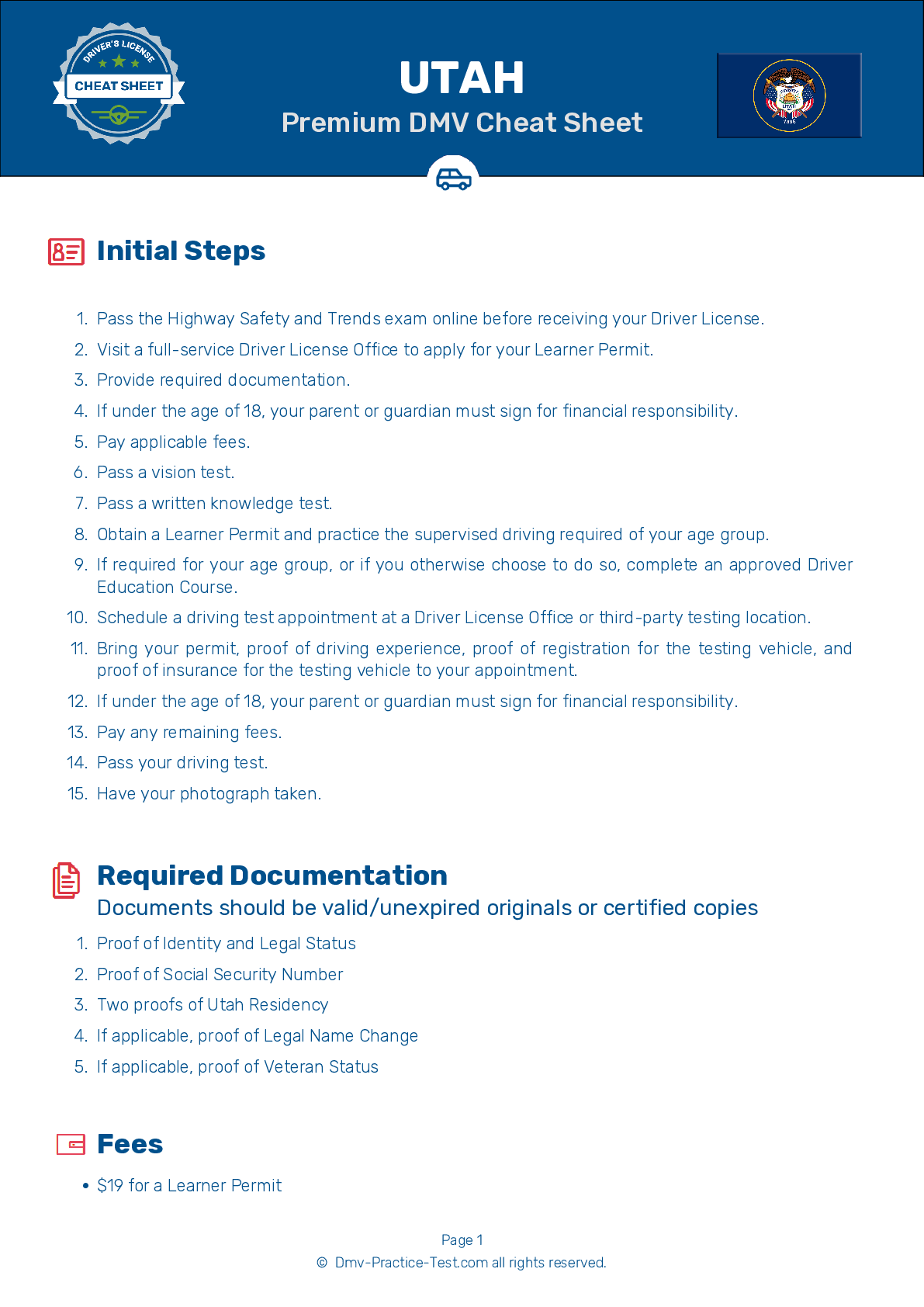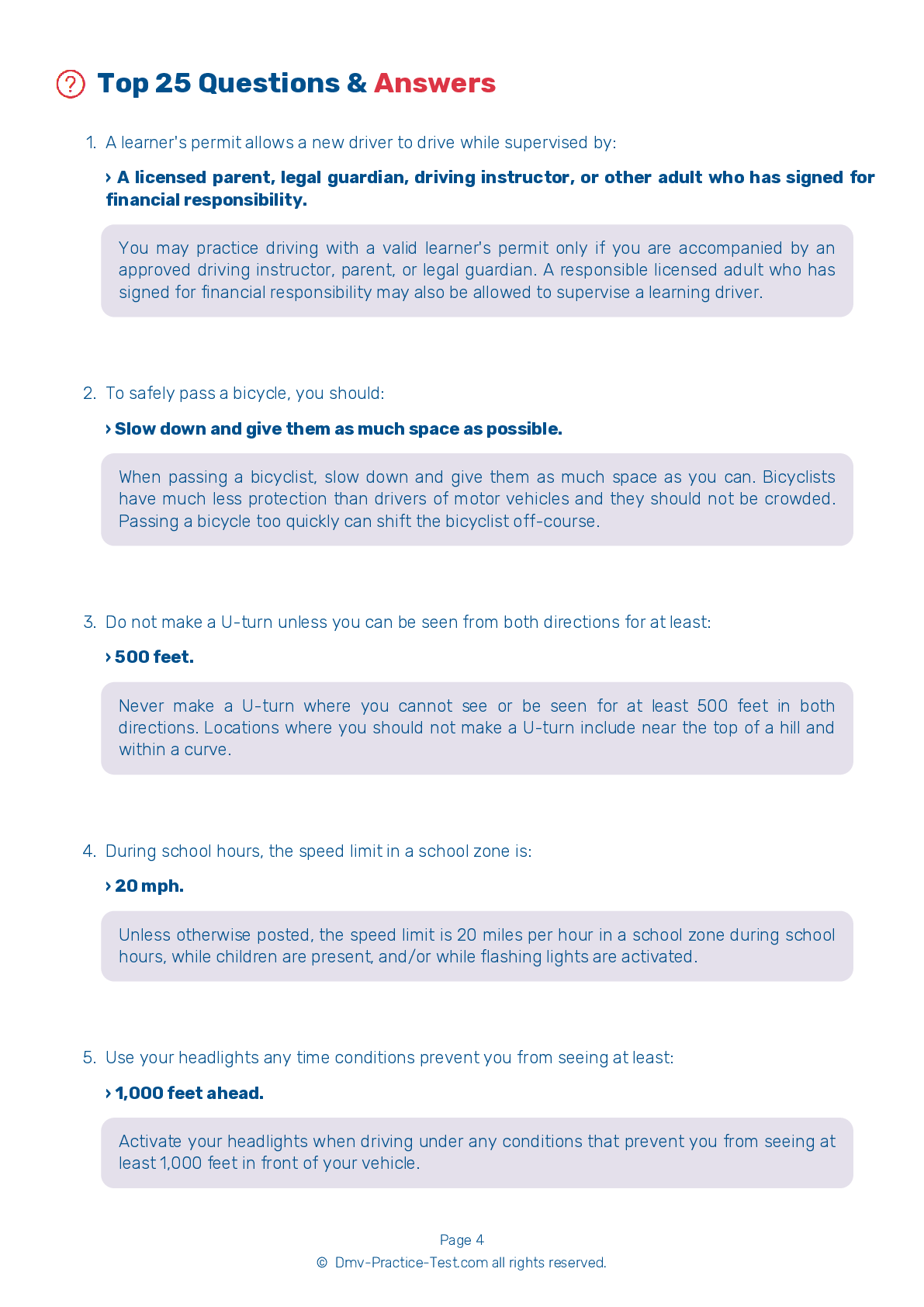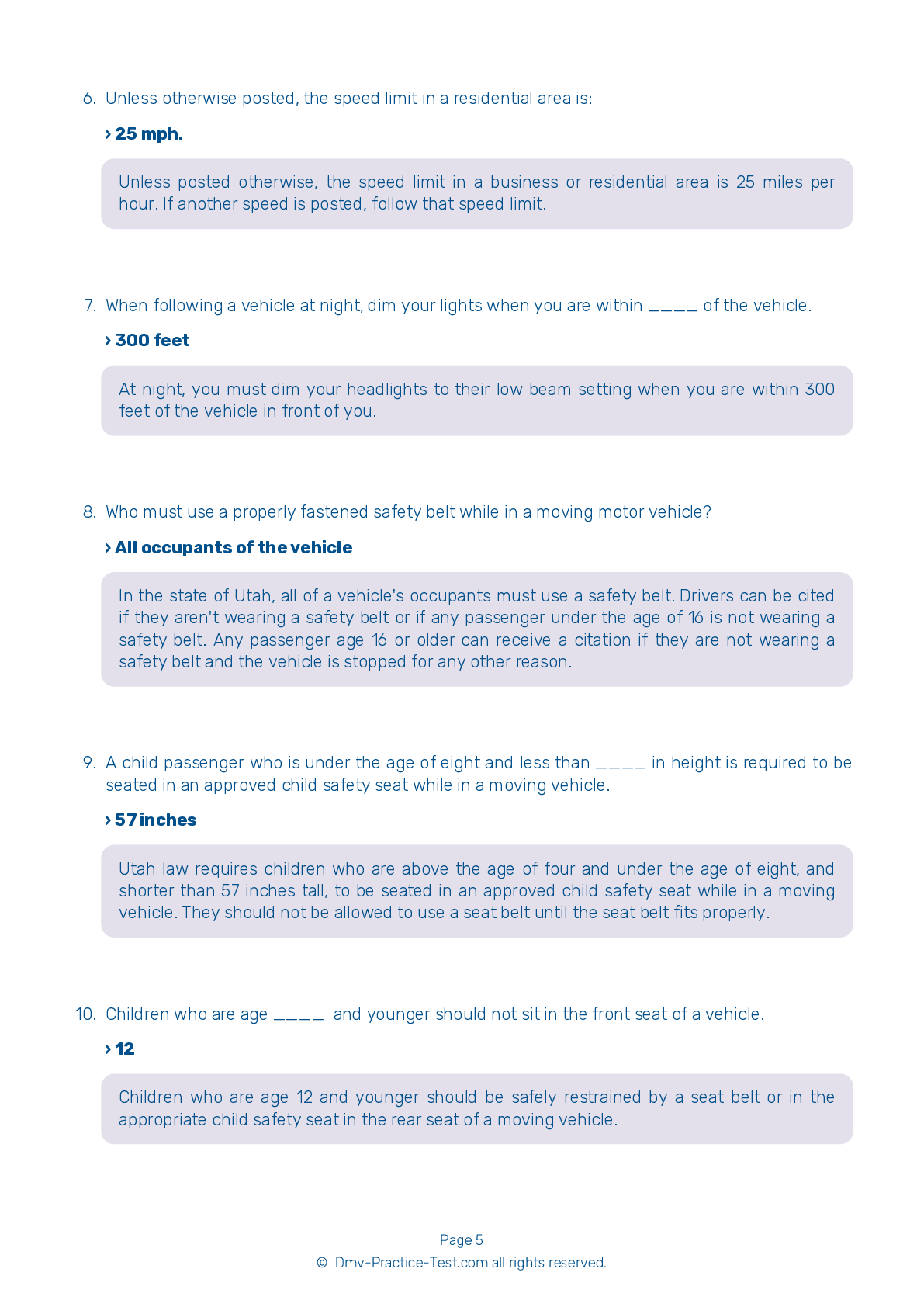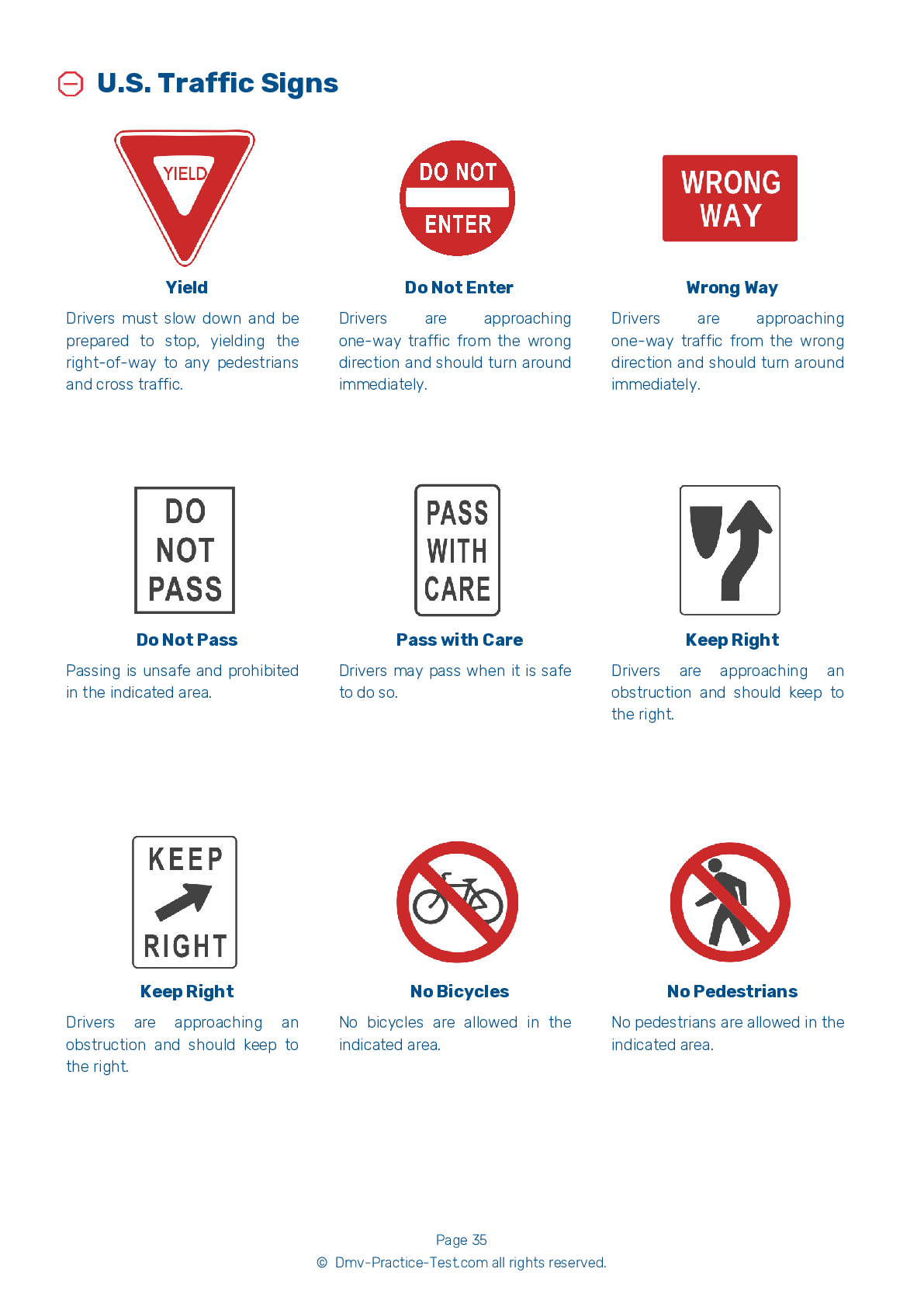FREE Utah DMV Practice Test #12
The practise exams for the Utah DMV have been updated for January 2025. It comprises questions based on the most important traffic signals and laws for 2025 from the Utah Driver Handbook. To study for the DMV driving permit test and driver's licence exam, use actual questions that are very similar (often identical!) to the DMV driving permit test and driver's licence exam.
Each question on the practise exam has a tip and explanation to help you recall the ideas. Questions about traffic rules, traffic signs, and driving statutes, as well as knowledge from the Driver Handbook, will be included in the written portion of the official Utah DMV test.
You must properly answer 20 of the 25 questions to receive a passing mark. Use the Utah Department of Motor Vehicles' practise exam to help you prepare for your instruction permit or driver's licence.
The DMV exam is offered in a variety of languages.
Using any form of testing help will result in an automatic fail, and the DMV may take further action against your driver's licence, so avoid it.
1 . The driver's left arm and hand are extended upward. This hand signal means that the driver plans to:
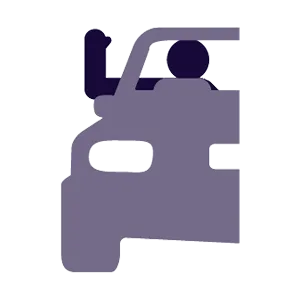
If a driver's left arm and hand are extended upward, they are indicating that they intend to turn right. Adjust your driving accordingly if following a driver who is using this hand signal.
2 . Certain highway signs require drivers to obey an indicated instruction. Such signs are known as:
Regulatory signs require drivers to obey an indicated instruction. Failure to comply is subject to penalty.
3 . To be safe when crossing a railroad, you should:
Railroad crossings are always dangerous. Drivers should look and listen for an approaching train coming from either direction before proceeding across the tracks. Watch for signals indicating an approaching train and never proceed until you are certain it is safe to do so.
4 . You are driving on a busy street and your vehicle’s accelerator sticks open. You should:
If your vehicle’s accelerator sticks open, your vehicle will continue to maintain its speed or accelerate, even if you remove your foot from the gas pedal. Turn off the ignition, using care to move the ignition switch only far enough to stop the engine and not engage the steering wheel locking mechanism. Apply your brakes and move off the road to a safe area.
5 . You are driving when your power steering stops working. You should:
If your power steering stops working, additional effort will be required to maintain steering control. Reduce your speed and pull off the roadway to stop in a safe area.
6 . To help relieve fatigue on a long trip, it is a good idea to:
To avoid becoming fatigued while taking a long trip, stop every two hours for a short break. If you become drowsy, pull off the road and park in a safe place to take a nap, or find a room to stay for the night.
7 . How can you help prevent rear-end collisions?
Stopping suddenly can make it difficult for drivers behind you to avoid a rear-end collision. When stopping, release the accelerator to allow your vehicle to slow. Press the brake pedal by applying steady pressure, activating your brake lights and causing the vehicle to stop smoothly.
8 . Pedestrians in crosswalks and at intersections always have the right-of-way.
Pedestrians have the right-of-way when crossing the road at an intersection. A crosswalk exists anywhere that two streets intersect, whether the crosswalk is marked or unmarked.
Need Car Insurance? No problem!
Compare the best rates in Utah and find a personalized policy that meets your needs.
1. Are You Currently insured ?
2. Married ?
3. Do you own your Home?
4. Do you have more than 1 car ?
5. Have you or a Family Member Honorably Served in U.S. Military ?
6. Your Name
7. Age
8. Zip code
IMPORTANT REMINDER:Auto Insurance is Mandatory to drive in Utah. Get covered before you hit the road to avoid any fines.
Ranked by best match
